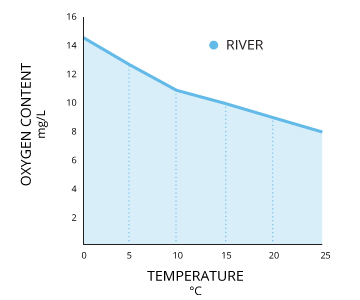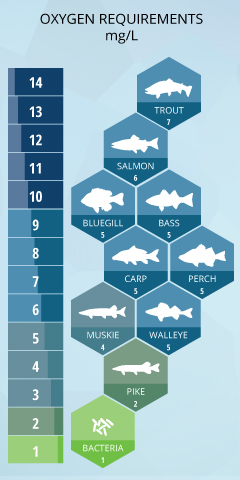class: center, middle .title[Fate and Transport Modeling] <br> .subtitle[BEE 4750/5750] <br> .subtitle[Environmental Systems Analysis, Fall 2022] <hr> .author[Vivek Srikrishnan] <br> .date[September 14, 2022] --- name: toc class: left # Outline <hr> 1. Questions? 2. Fate and Transport Modeling 3. Example: Dissolved Oxygen --- name: poll-answer layout: true class: left # Poll <hr> .left-column[{{content}} URL: [https://pollev.com/vsrikrish](https://pollev.com/vsrikrish) Text: **VSRIKRISH** to 22333, then message] .right-column[.center[]] --- name: questions template: poll-answer ***Any questions?*** --- layout: false # Last Class <hr> * Monte Carlo Confidence Intervals * Risk --- class: left # Fate and Transport Modeling <hr> * How do nutrients and other quantities move through environmental mediums? * The mass balances can be the result of more complex processes, not just decay/dissipation, requiring simulation one "chunk" of the domain at a time. --- class: left # Example: Dissolved Oxygen <hr> .left-column[Dissolved oxygen (DO) is the free, non-compound oxygen present in water or other liquids. Freshwater can only hold small amounts, and thie capacity is regulated by temperature.] .right-column[.center[ .cite[Source: [fondriest.com](https://www.fondriest.com/environmental-measurements/parameters/water-quality/dissolved-oxygen/)]]] --- class: left # Dissolved Oxygen <hr> .center[ .cite[Source: [usgs.gov](https://www.usgs.gov/special-topics/water-science-school/science/dissolved-oxygen-and-water)]] --- class: left # Dissolved Oxygen and Life <hr> .left-column[Dissolved oxygen is an important nutrient for aquatic life. **Hypoxia** occurs when DO levels are $< 2$ mg/L. ] .right-column[.center[] .center[.cite[Source: [fondriest.com](https://www.fondriest.com/environmental-measurements/parameters/water-quality/dissolved-oxygen/)]] ] --- class: left # Factors Influencing DO <hr> * Temperature, Pressure, Depth * Salinity * Mixing * Plant and Microbial Life * Organic Matter --- class: left # Impact of Paris On DO In The Seine, 1874 <hr> .center[ .cite[Source: Dmitrieva, T., et al. (2018). [https://doi.org/10.1007/s12685-018-0216-7](https://doi.org/10.1007/s12685-018-0216-7)]] --- class: left # DO Regulatory Standards <hr> **Objective**: Keep DO *above* the regulatory standard. In NY: * DO levels may not fall below 3 mg/L * DO may not be below 4.8 mg/L for an extended period .cite[Source: [Westlaw](https://govt.westlaw.com/nycrr/Document/I4ed90412cd1711dda432a117e6e0f345?viewType=FullText&originationContext=documenttoc&transitionType=CategoryPageItem&contextData=(sc.Default)&bhcp=1)] --- class: left # Oxygen Balance in Rivers and Streams <hr> .center[] --- class: left # Selecting a Metric for DO Fluxes <hr> Typically use *oxygen demand* (OD): * measure of the concentration of oxidizable materials in a water sample * metric for organic waste contamination * reflects how oxygen will be depleted in a given segment But there are several different processes affecting total OD! --- class: left layout: true # Types of Oxygen Demand <hr> {{content}} --- * **Biochemical Oxygen Demand (BOD)**: Oxygen used by microbes during aerobic decomposition of organic materials: $$ \text{Organic Matter} + \text{O}_2 \rightarrow \text{CO}_2 + \text{H}_2\text{O} + \text{NO}_3 + \text{SO}_2 + \text{Residuals} $$ --- * **Carbonaceous BOD (CBOD)**: Oxygen consumed during microbial decomposition of carbon compounds, *e.g.*: $$ \text{C}_a\text{H}_b\text{O}_c + d\text{O}_2 \rightarrow e\text{H}_2\text{O} + f\text{CO}_2 $$ --- * **Nitrogenous BOD (NBOD)**: Oxygen consumed during microbial decomposition of nitrogen compounds: $$ 2\text{NH}_2^+ + 4\text{O}_2 \rightarrow 2\text{H}_2\text{O} + 4\text{H}^+ + 2\text{NO}_3^- $$ --- Moreover, BOD is differentiated based on time frame, *e.g.*: * BOD<sub>5</sub>: oxygen demand over 5 days * BOD<sub>20</sub>: oxygen demand over 20 days --- class: left layout: false # Modeling DO <hr> * Need a model that will predict DO as a function of CBOD, NBOD * But now, use a *fate and transport* modeling approach. * Can't assume homogeneous processes. --- class: left layout: false # Modeling DO <hr> .left-column[So what do we do? Start by assuming *steady-state* waste in each section.] .right-column[.center[]] --- class: left layout: false # Steady-State Waste, DO Mass Balance <hr> $$ \text{Flow in} - \text{Flow out} = U \frac{dC}{dx}, $$ where $C(x)$ is DO (mg/l) $x$ km downstream, $U$ (km/d) is the water velocity. -- Additional notation: * CBOD (mg/l): $B(x)$ * NBOD (mg/l): $N(x)$ --- class: left # Steady-State Waste, DO Mass Balance <hr> Assume decomposition of wastes is first-order: $$ \begin{aligned} \frac{dM}{dt} &= -kM \\\\ \Rightarrow M &= M_0 \exp(-kt) \end{aligned} $$ where $M$ is the mass (kg) of waste, $M_0$ is the mass at $t=0, x=0$. -- Since $U$ is the velocity: $$ M = M_0 \exp(-kx/U) $$ --- class: left # Steady-State Waste, DO Mass Balance <hr> This means: * For biochemical organics, $$ B(x) = B_0 \exp(-k_c x / U); $$ * For nitrification, $$ N(x) = N_0 \exp(-k_n x / U). $$ --- class: left # Steady-State Waste, DO Mass Balance <hr> Other processes: * Reaeration, assume a simple linear model: $k_a (C_s - C)$ * Assume measured, constant values for photosynthesis ($P_s$), respiration ($R$), benthal uptake ($S_B$) -- DO uptake from waste decomposition: * CBOD: $k_cB = k_cB_0 \exp(-k_cx/U)$ * NBOD: $k_nN = k_nN_0 \exp(-k_nx/U)$ --- class: left # Steady-State Waste, DO Mass Balance <hr> Putting it all together: $$ \begin{aligned} U \frac{dC}{dx} &= k_a (C_s - C) + P - R - S_B \\\\ &\quad - k_cB_0\exp\left(\frac{-k_cx}{U}\right) - k_n N_0\exp\left(\frac{-k_nx}{U}\right) \end{aligned} $$ --- class: left # Steady-State Mass Balance Solution <hr> $$ \begin{aligned} C(x) &= C_s(1 - \alpha_1) + C_0 \alpha_1 - B_0 \alpha_2 - N_0 \alpha_3 \\\\ &\quad + \left(\frac{P-R-S_B}{k_a}\right) (1-\alpha_1), \end{aligned} $$ -- $$ \begin{aligned} \alpha_1 &= \exp\left(-\frac{k_a x}{U}\right)\\\\ \alpha_2 &= \left(\frac{k_c}{k_a-k_c}\right)\left[\exp\left(\frac{-k_c x}{U}\right) - \exp\left(\frac{-k_ax}{U}\right)\right]\\\\ \alpha_3 &= \left(\frac{k_n}{k_a-k_n}\right)\left[\exp\left(\frac{-k_n x}{U}\right) - \exp\left(\frac{-k_ax}{U}\right)\right] \end{aligned} $$ --- class: left # Steady-State Mass Balance Solution <hr> $$ \begin{aligned} C(x) &= C_s(1 - \alpha_1) + C_0 \alpha_1 - B_0 \alpha_2 - N_0 \alpha_3 \\\\ &\quad + \left(\frac{P-R-S_B}{k_a}\right) (1-\alpha_1), \end{aligned} $$ **Note**: Usually, these models ignore $P$, $R$, and $S_B$. Why do you think that might be? --- class: left # Steady-State Mass Balance Solution <hr> $$ C(x) = C_s(1 - \alpha_1) + C_0 \alpha_1 - B_0 \alpha_2 - N_0 \alpha_3 $$ .center[] --- class: left # Multiple Discharges <hr> .center[] -- **Note**: Need to calculate new concentrations at each discharge due to volume changes! --- class: left # Multiple Discharges <hr> .center[] **Question**: Is it fair to ask every discharge to comply with the regulation? Why or why not? --- class: left # Example DO Questions: * What treatment % (CBOD/NBOD reduction) is needed to meet standard? * What is the probability of noncompliance? --- class: left # Simulation Modeling Framework <hr> .center[] --- class: middle, center <hr> # Next Class <hr> * Prescriptive Modeling * Introduction to Optimization